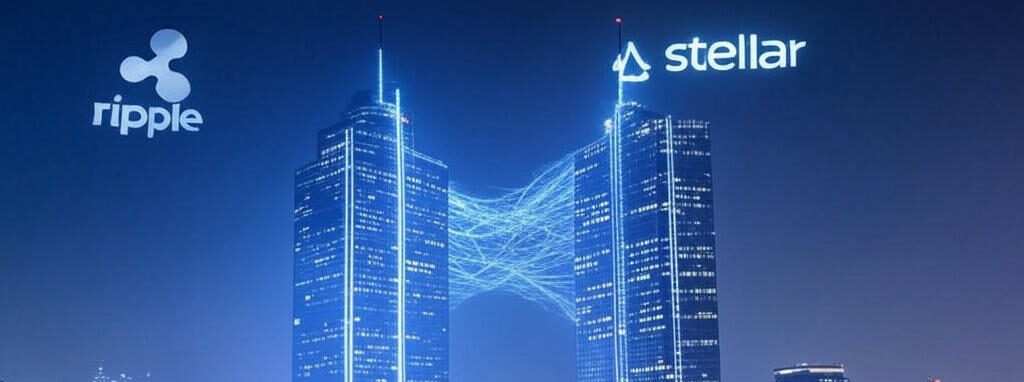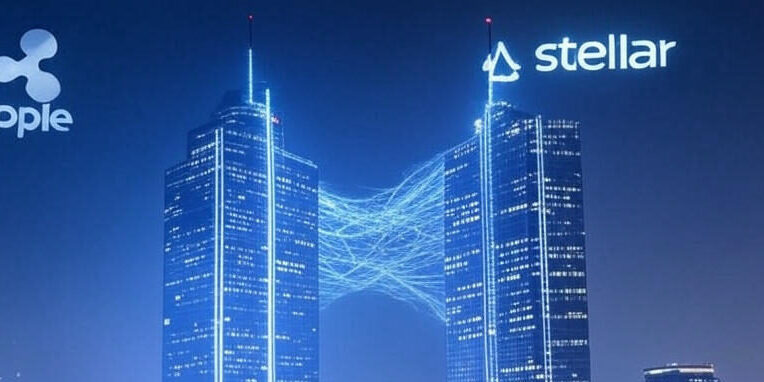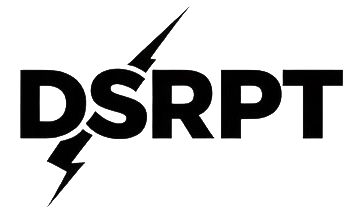
In 2012, two brilliant minds, Jed McCaleb and Chris Larsen, met in Silicon Valley’s buzzing crypto scene, united by a dream to speed up global payments. They launched XRP together, but it crumbled when Jed, fed up with Chris’s Wall Street ties, split to create XLM for the little guy. Now, one battles regulators, the other plots a quiet uprising. Who’s going down in flames?”
Act I: The Meeting of Minds
It’s 2012, and the crypto scene is buzzing with the raw energy of Bitcoin’s rise. Enter Jed McCaleb, a tech prodigy with a trail of disruptive innovations behind him—eDonkey, the peer-to-peer pioneer, and Mt. Gox, the first major Bitcoin exchange he sold before its infamous collapse. McCaleb’s a dreamer, a coder with a vision to harness blockchain for something bigger than speculation: fast, cheap cross-border payments.
Then there’s Chris Larsen, the polished fintech veteran. With a resume boasting successful startups like E-Loan, Larsen’s the pragmatic yin to McCaleb’s idealistic yang. They meet through the swirling currents of Silicon Valley’s innovation hubs—exact details are murky, but their paths converge on a shared obsession: transforming the sluggish, expensive world of international money transfers.
Together, they co-found Ripple Labs, launching XRP as their weapon of choice. The pitch? A cryptocurrency that slashes transaction times from days to seconds, a bridge currency for banks to ditch the archaic SWIFT system. In those heady early days, McCaleb and Larsen are a dynamic duo, fueled by caffeine and ambition, sketching out a future where finance bends to their will.
Act II: The Great Divide
But every blockbuster has a plot twist. By 2013, the honeymoon’s over. McCaleb, a crypto purist at heart, starts chafing under Ripple’s trajectory. He sees Larsen steering the company toward Wall Street, cozying up to banks and centralized power—everything McCaleb’s libertarian roots despise. “This isn’t what I signed up for,” he reportedly fumes behind closed doors, though he’s tight-lipped in public.
Larsen, meanwhile, doubles down. He believes banks aren’t the enemy—they’re the key to mass adoption. XRP isn’t for the crypto anarchists; it’s for the suits in corner offices. The rift widens, and in 2013, McCaleb walks away, leaving Ripple in Larsen’s hands. But he doesn’t leave empty-handed—he takes a massive stash of XRP with him, sparking a legal showdown.
Ripple sues, fearing McCaleb could tank XRP’s value by dumping his holdings. The courtroom becomes their battleground, with McCaleb’s billions in XRP locked in a tense standoff. Eventually, a settlement forces him into a slow sell-off, but the scars remain. “Jed wanted to burn it all down,” an insider whispers. “Chris wanted to build an empire.”
Undeterred, McCaleb pivots. In 2014, he teams up with Joyce Kim, a sharp-minded lawyer with a passion for social good, to launch Stellar. XLM is born—a defiant middle finger to Ripple’s corporate turn. Where XRP serves the elite, XLM targets the everyman, aiming to bank the unbanked with a decentralized, open-source ethos.
Act III: The Coins Exposed
Fast forward to today, and XRP and XLM stand as titans in the cross-border payment arena, but their DNA couldn’t be more different. Let’s break down XRP vs XLM:
The Tech
- XRP: Powered by the Ripple Protocol Consensus Algorithm (RPCA), it’s lightning-fast—transactions settle in 3-5 seconds. But it’s semi-centralized, with Ripple handpicking many of the validators. Crypto purists scoff.
- XLM: Runs on the Stellar Consensus Protocol (SCP), equally speedy at 3-5 seconds, but anyone can run a node. It’s the decentralized darling, free from corporate overlords.
The Mission
- XRP: Larsen’s baby is all about banks. It’s the Wall Street warrior, partnering with giants like Santander and MoneyGram to streamline institutional transfers.
- XLM: McCaleb’s creation is the people’s champion, targeting individuals and small businesses, especially in developing nations. Think remittances in Africa, micropayments in Asia.
The Numbers
- XRP: Boasts a hefty market cap ($135.3 billion as of March 2025), but it’s a rollercoaster—volatile as hell thanks to the SEC’s ongoing lawsuit claiming it’s a security.
- XLM: Smaller at $8.19 billion, but steadier, growing quietly with partnerships like IBM and a focus on grassroots adoption.
The Drama Factor
- XRP: Plagued by the SEC saga since 2020, with Larsen front and center defending Ripple’s honor. It’s a legal quagmire threatening to sink the ship.
- XLM: Slips under the radar, its non-profit status and decentralized vibe keeping regulators at bay. McCaleb’s playing chess while Larsen’s in a cage match.
Act IV: How They Feel Now
So, where do McCaleb and Larsen stand today? Officially, they’re tight-lipped. McCaleb, now a crypto billionaire living a low-key life, shrugs off Ripple in rare interviews. “I don’t think about them much,” he told a reporter in 2018, a faint smirk playing on his lips. “Stellar’s my focus.” But dig deeper, and his barbs sting—calling Ripple “too centralized” is his polite way of saying Larsen sold out.
Larsen, embroiled in Ripple’s legal mess, keeps it professional. He sidesteps questions about McCaleb, focusing on XRP’s fight for survival. “We’re building something transformative,” he insists, but his silence on his ex-partner speaks volumes. Insiders hint at a cold war—less about personal hate, more about clashing ideologies. McCaleb’s the rebel who walked away; Larsen’s the king defending his throne.
Their creations mirror their rift. Ripple’s glitzy offices and bank deals scream Larsen’s ambition. Stellar’s understated growth and humanitarian bent reflect McCaleb’s quiet defiance. Do they lose sleep over each other? Doubtful. But the rivalry simmers, a shadow over every XRP surge and XLM milestone.
Act V: The Endgame
What’s next for XRP and XLM? Ripple’s fate hinges on the SEC lawsuit. Win, and Larsen could cement XRP as the king of institutional crypto. Lose, and it’s game over—exchanges delisting, investors fleeing. Stellar, meanwhile, is the slow burn, building a network for the future—one unbanked user at a time. With IBM in its corner and a knack for staying out of trouble, XLM’s poised to thrive as the underdog.
This isn’t just a coin comparison—it’s a clash of titans. XRP and XLM are more than code; they’re the legacies of two men who started as allies and ended as adversaries. McCaleb’s betting on a decentralized revolution. Larsen’s banking on the old guard embracing the new. Who’ll win? The market will decide, but the story—the betrayal, the ambition, the quiet war—will echo long after the dust settles.
This exposé rips the lid off XRP vs XLM, blending their technical showdown with the raw, human saga of McCaleb and Larsen. It’s a tale of what could’ve been, what was lost, and what’s still at stake in the wild west of crypto.







